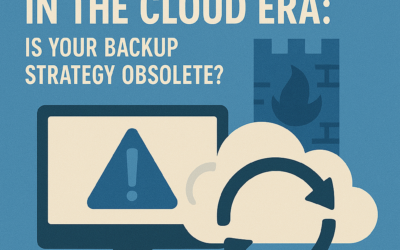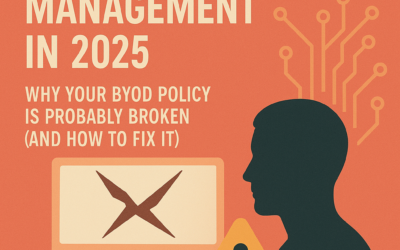As we proceed through Q2 of 2023, the IT landscape continues to evolve relentlessly. Given this dynamism, IT Directors must navigate a maze of emerging trends, complex technologies, and shifting business demands. This article explores nine key trends shaping managed IT services in 2023.
- The Increasing Importance of Cybersecurity
In an era where the average cost of a data breach in the U.S. has surged to approximately $9.44 million, cybersecurity is no longer an optional component of IT strategy. It’s become a top-of-mind concern for businesses across sectors and scales. The rise of remote and hybrid work models has created new security vulnerabilities, accentuating the need for comprehensive cybersecurity plans. Managed Security Service Providers (MSSPs) are stepping into this critical space, offering ongoing support to monitor security, keep systems up-to-date, and ensure a state of readiness against potential threats. - The Unstoppable March Towards Cloud Migration
The COVID-19 pandemic catalyzed digital transformation, accelerating the shift of business operations to the cloud. Companies have come to appreciate the agility, scalability, and cost-effectiveness that cloud services confer. Managed Service Providers (MSPs) have emerged as valuable partners in this transition, offering expert assistance with cloud migration and the subsequent maintenance of cloud applications. Their role is to ensure that businesses reap the maximum benefits from their cloud investments. - The Emergence of Cloud-Dependent Networks
With the migration to the cloud comes a new dependence on the internet and virtual networks. This shift necessitates a focus on improving internet latency and virtual networking. As these changes unfold, the role of the IT department is becoming increasingly complex. MSPs can ease this burden by managing and optimizing cloud-dependent networks, ensuring smooth operation and enhanced productivity. - The Demand for Omnichannel Customer Experiences
The digital customer of today expects seamless, omnichannel experiences. This expectation drives businesses to connect all systems and channels so customers can move from one sales channel to another with little disruption. Achieving this seamless data flow within an organization is a challenging task many businesses struggle to accomplish alone. Partnering with a trusted IT service provider can help overcome this hurdle, ensuring that companies stay ahead in the race for customer satisfaction. - The Rise of Remote and Hybrid Workplaces
The pandemic has fundamentally reshaped the way we work. Remote and hybrid work models are not just temporary adaptations but are becoming the new norm. Nearly two-thirds of high-revenue growth companies are now allowing mixed work. This growing demand necessitates businesses adapting their systems to enable productivity and collaboration between employees, irrespective of their physical location. Moreover, these new work models present their cybersecurity risks, emphasizing the need for robust security measures. - The Power of Low-Code Technology
The rise of low-code development platforms is a trend that cannot be ignored in 2023. These platforms empower employees to create and deliver applications without extensive coding knowledge. They democratize software development, enabling anyone in the organization to build a dashboard or develop an app to solve a challenge. With prebuilt templates and drag-and-drop functionality, these tools boost productivity, cut costs, and improve the customer experience. - The Shift from Capex to Opex
The economic forces of 2023 are seeing businesses striving to curtail capital expenditure (Capex) and shift more spending to the cloud. The trend towards ‘as-a-service alternatives is gaining momentum, particularly in backup, storage, and disaster recovery technologies. The shift from Capex to operational expenditure (Opex) not only offers businesses predictable expenses but also allows mid-market organizations to obtain services that were previously out of reach. - The Rise of FinOps
With the shift towards Opex and cloud computing, there has been a similar surge in Financial Operations (FinOps) enthusiasm. FinOps is a practice that brings financial accountability to the variable spend model of the cloud, enabling organizations to understand cloud costs and make informed trade-offs. As cloud deployments mature, there is a growing need for automated tools to manage multi-cloud settings and related consumption models. This requirement is paving the way for incorporating automation, machine learning, and AI in FinOps, thus creating a new frontier in financial management. - The Continued Pursuit of Digital Transformation
Despite economic concerns and recessionary fears, businesses continue to forge ahead with their digital transformation and IT modernization initiatives. A digital presence has become a matter of survival in a highly competitive business environment. However, economic realities impact IT spending plans, making businesses more cautious about their investments. The focus is shifting away from exploratory initiatives with uncertain payoffs towards digital transformation efforts that are seen as essential for competitiveness and viability.
In conclusion, 2023 is a pivotal year for IT directors navigating the ever-evolving technology landscape. With trends like enhanced focus on cybersecurity, cloud migration, low-code technology, and digital transformation continuing to shape the IT realm, businesses must stay agile and informed.
Managed IT services providers are invaluable allies in this journey, offering the expertise and resources necessary to navigate these trends and keep businesses on the cutting edge of technology. As we progress through 2023, it will be interesting to see how these trends continue to unfold and shape the future of managed IT services.




